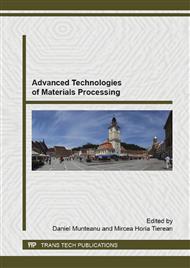p.162
p.171
p.178
p.187
p.199
p.209
p.217
p.224
p.230
The Technological Comparative Analysis between the Vertical MAG Welding with Solid Wire and with Cored Wire
Abstract:
The vertical welding is generally considered difficult because of the danger of the flow of the melting bath and the melted slag under the action of gravity. In the case of the MIG/MAG welding process, the technological measurements that are being regarded in the ascending and descending of the vertical welding refer to: the use of transfer modes through short circuit and pulsed current, the use of core wires instead of solid wires, the crossing from the semi-mechanized to automatic or robotical welding, that allows the use of complex radial oscillation systems, that assure a good control of the metal bath. The paper wants to make a comparative technological and economical analysis between the vertical ascendent MAG welding using solid wire or core wire. The advantages that are being presented are for the use of the core wire with a rutilic core for the vertical, ascendent welding from a technological, qualitative and economical point of view in the mechanical corner welding process of a 10 mm thickness steel plates.
Info:
Periodical:
Pages:
199-208
Citation:
Online since:
October 2015
Authors:
Keywords:
Price:
Сopyright:
© 2015 Trans Tech Publications Ltd. All Rights Reserved
Share:
Citation:


